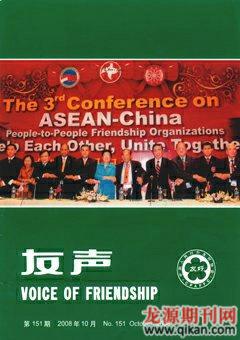Astana——A Capital City for New Millennium
Ikram Adyrbekov (Kazakhstan)
Astana, the capital of Kazakhstan, is nearly 10 years old and a wide range of ambitious building projects are in full swing. 1,700 cranes are in operation on 650 separate sites in a city which less than a decade ago had a population of only 280,000, and today boasts 600,000.
In 1994, President Nursultan Nazarbayev decided the capital of Kazakhstan would be moved here from Alma-Ata. In 1997, the citys name—briefly Akmola and before that Tselinograd—was changed to Astana, literally ‘capital. Moving the capital to Astana allowed President Nazarbayev to build—with the extraordinary level of foreign investment that the country has attracted since the discovery of its untapped oil reserves—on an epic scale.
On the right bank of the city is the building site of Khan Shatyry—a spectacular and unique, fully-functioning indoor city for 10,000 inhabitants designed by Norman Foster. This immense structure—an area larger than ten football stadiums—will regulate temperature and accommodate schools, hospitals, shops, sports and concert halls. Cars will be prohibited from entering, but canals and water transport will be used. The upper floor of Khan Shatyry will have a jungle, beach and a “sea”.
Foremost among the completed large-scale buildings is the “Tree of Life”. It stands midway down the length of a 1.5km-long boulevard lined with flowerbeds, sculptures and fountains. Huge offices line either side of this thoroughfare: a national archive resembling a giant egg, a pair of 30-storey cones in gold mirror glass and a trio of towers. The Baiterek Tower was completed in 2002. It is 97m high (a figure that reflects the year in which Astana became the capital) and comprises an “egg” of gold mirror glass held aloft on a “tree” of white steel. The Kazakhs have dubbed it “The Big Chupa Chups” for its resemblance to the lollipop. A lift ascends into the egg to an observation deck with a platform that supports a triangular gold ingot in which President Nazarbayevs handprint has been cast. The tower has come to symbolise the ambitions of the country much like the Eiffel Tower in France.
In 1998, President Nazarbayev envisaged a permanent structure to house the Congress of World Religions (which takes place triennially in Astana). There was a site: directly opposite the presidential palace. There was a time frame: it had to be ready by 2006. The President had been thinking about the form that this “Palace of Peace & Accord” should take. He decided a pyramid would be suitable and contacted Norman Foster to design it. The pyramid, 62m wide and long, incorporates a sub-terranean 1,500-seat auditorium which today functions as an all-purpose performing arts venue. Blue and yellow light permeates the cathedral-like interior of the pyramid itself. On exiting a lift at level six, ramps ascend through a hanging garden and wind towards a circular platform with a wide oculus at its centre. Here, Brian Clarkes stained glass windows can be admired (a flock of doves are pictured ascending towards the sun that is the central emblem of Kazakhstans flag). The building required a workforce of nearly 2,000—supplemented by the Kazakh army in the final stretch.
This year alone, a new bridge across the Ishim River, an outpatient medical facility, four monuments, a residential home for veterans and senior citizens were unveiled in Astana. A number of overpasses have also been completed and exit roads running towards the cities of Kokshetau, Kostanai and Pavlodar have been overhauled. 24 parking lots are being constructed to house 7,500 cars each (55 underground garages and multi-level parking lots accommodating up to 20,000 cars each will be operational by 2009).
An additional two bridges are under construction, as well as 22 schools, a medical cluster, a 3,500-seat concert hall by the Italian architect Manfredi Nicoletti and a 3km-long Green Water Boulevard. Groundbreaking ceremonies have been held to celebrate the start of construction of the Nokian tyres plant, Nissan and General Electric assembly facilities. New 5-star hotels, mosques and synagogue all function well and a light rail metro line will open in 2010 (with a link to the airport). Landscaping work is also underway to make Astana greener. 400 hectares will be transformed into parks and squares and 40 thousand hectares of forest have already been planted around the citys outskirts.
Kisho Kurokauwa, the superstar Japanese architect designed much of the city plan, but in spite of the many extraordinary talents involved, President Nazarbayev is Astanas ultimate visionary. “Our plans for Astana are grand,” he explains. “The heart of the nation beats here. And I believe that the greater part of the city will be completed by 2012.”
The author is Kazakh ambassador to China.
- Voice Of Friendship的其它文章
- Montenegrin Friends Praise China’s Achievement
- Delegation of University of Regina Visits China
- Former Japanese Ministers Masajuro Shiokawa and Kiyoshi Mizuno Visit China
- 1150th Anniversary of Birth of Tajik Poet Abu Abdullah Rudaki Commemorated in Beijing
- CPAFFC President Chen Haosu Receives Hilal-i-Quaid-i-Azam Medal
- Bangladesh-China People’s Friendship Association Delegation in China

